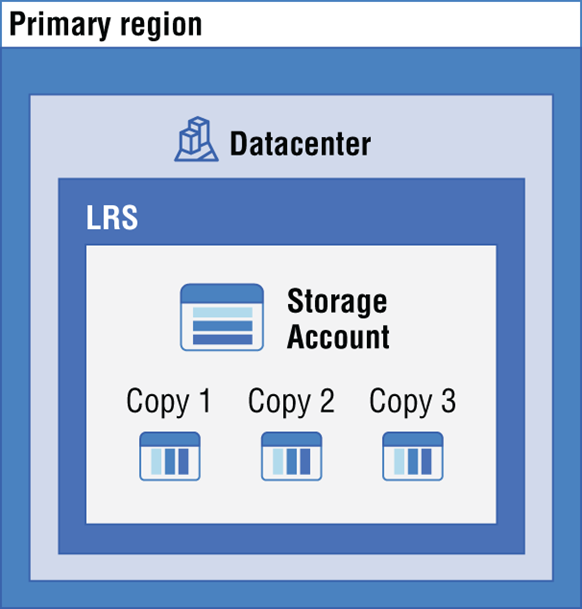The rationale behind storage replication is to ensure that high availability and durability are always there for the data you are storing in Azure Storage. Your data will be impacted due to planned and unplanned maintenance events such as hardware failures, network and power outages, natural disasters, and so on. Azure Storage replication will ensure that your data is copied and is protected from the aforementioned impacts. There are various types or levels of replication strategies offered by Azure. Starting from replication within the same datacenter, across availability zones, and even to cross-region replication, storage replication guarantees that the SLA for the storage service offered by Microsoft is met.
Before you start, the selection of replication strategy is a trade-off between the cost and durability. If you choose the cheapest replication strategy, then the durability will be also the least. Similarly, if you want a replication that offers the highest durability, the cost will also be on the higher side compared to other strategies. Also, the availability of these options may vary depending upon the type of storage account you are choosing. Nevertheless, we will cover the types and supported replication options later in this chapter. Let’s now compare the different replication methods.
Locally Redundant Storage
Locally redundant storage (LRS) offers the least durability compared to other options you have. Since the durability is less, LRS offers the lowest cost. In LRS, you will have three copies of data within a single datacenter in different fault domains. The copies will always be up-to-date, and all changes are written to the storage account synchronously.
The downside here is that just like you saw in the case of availability sets for VMs, if the entire datacenter goes offline, your data will be inaccessible. This issue is addressed in the upcoming options. LRS offers a durability of 99.99999999999 percent (11 nines) over a given year. You shouldn’t confuse this value with the SLA; durability is a commitment to ensure a level of data integrity.
Despite the limitations, there are certain scenarios where LRS can be the right candidate.
- If your data can be easily reconstructed in case of a data loss.
- Live feed, where the data constantly changes and there is no need to store data. All data written will be constantly changing.
Figure 6.1 shows how data is replicated in LRS.

FIGURE 6.1 Locally redundant storage
To overcome the drawbacks you saw in the case of LRS, you have another option called zone redundant storage.



